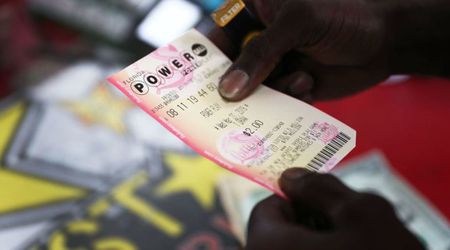Here’s Why Lottery Jackpot Sizes Are Growing in Recent Years

Billion-dollar lottery jackpots have become increasingly common, with eight of the ten largest jackpots occurring since 2021 and four surpassing $1 billion in 2023 alone. Expert Kimberly Palmer from NerdWallet attributes this surge in jackpots to rule changes in major lotteries. Powerball and Mega Millions adjusted their formulas in recent years, making it harder to win, fluctuations in interest rates, and the influence of human psychology, per CBS News.

Formula Adjustments: Key Drivers of Jackpot Surge
Both Powerball and Mega Millions, the largest lotteries in the U.S., have recently altered their formulas to boost jackpot sizes. In Powerball, players choose six numbers: five between 1 and 69 (white balls) and one Powerball number between 1 and 26 (red ball). The jackpot is only won if all five white-ball numbers and the red Powerball number match. Similarly, in Mega Millions, players select five numbers between 1 and 70 (white balls) and one Mega Ball number between 1 and 25 (gold ball). Hitting the jackpot requires matching all five white balls and the Mega Ball.
These changes made the games more challenging to win. In 2015, Powerball increased its white ball pool from 59 to 69 and decreased its red ball pool from 35 to 26, altering the odds from about 1 in 175 million to 1 in 292 million. Similarly, in 2017, Mega Millions reduced its number selection range, raising the odds from about 1 in 259 million to 1 in 302 million. Moreover, Mega Millions raised its ticket price from $1 to $2, further contributing to jackpot growth.
Interest Rate Increases
You might be surprised to learn that interest rates have a significant impact on lottery jackpots. While it might not seem immediately obvious, interest rates play a crucial role in determining the size of a lottery's advertised jackpot.
Here's how it works: When you win the lottery, you typically have the option to receive your winnings either as a lump sum or as an annuity, which consists of 30 payments spread out over 29 years. The amount of these payments is calculated based on the total jackpot amount and factors in the interest you would earn on your winnings throughout the annuity. So, when interest rates rise, the projected value of the annuity payments increases as well. This means that even though the actual cash amount of the jackpot remains the same, the advertised jackpot amount appears larger due to the higher projected earnings from interest over the annuity period.

Larger Jackpots Lure More People
The allure of larger jackpots triggers a psychological response, leading to increased ticket sales, explains Tim Chartier, a mathematics professor specializing in sports analytics at Davidson College. With formula changes and interest rates driving jackpot growth, even those who typically wouldn't play the lottery are enticed to purchase tickets when the jackpot hits the $1 billion mark. As more tickets are sold, the jackpot swells further, creating a cycle of escalating sales and jackpots. While this may seem to improve one's chances of winning, the reality is starkly different. The odds of winning, even with increased ticket sales, remain overwhelmingly slim. For instance, the odds of winning the Powerball jackpot are approximately 1 in 292 million of picking the correct second out of a span of nearly a decade, per Chartier's analogy.
While purchasing multiple tickets may give the illusion of improved odds, the fundamental probability of winning remains minuscule. The psychology of anticipation plays a significant role in lottery fever, Palmer points out. With the lure of massive jackpots, excitement surges, and the dream of winning becomes more tantalizing. Moreover, it's not just individual winners who reap rewards. States benefit significantly from lottery revenue distribution. In Minnesota, for instance, 60% of the proceeds support essential public services such as transportation and education while the remaining 40% funds environmental and natural resources programs.





















